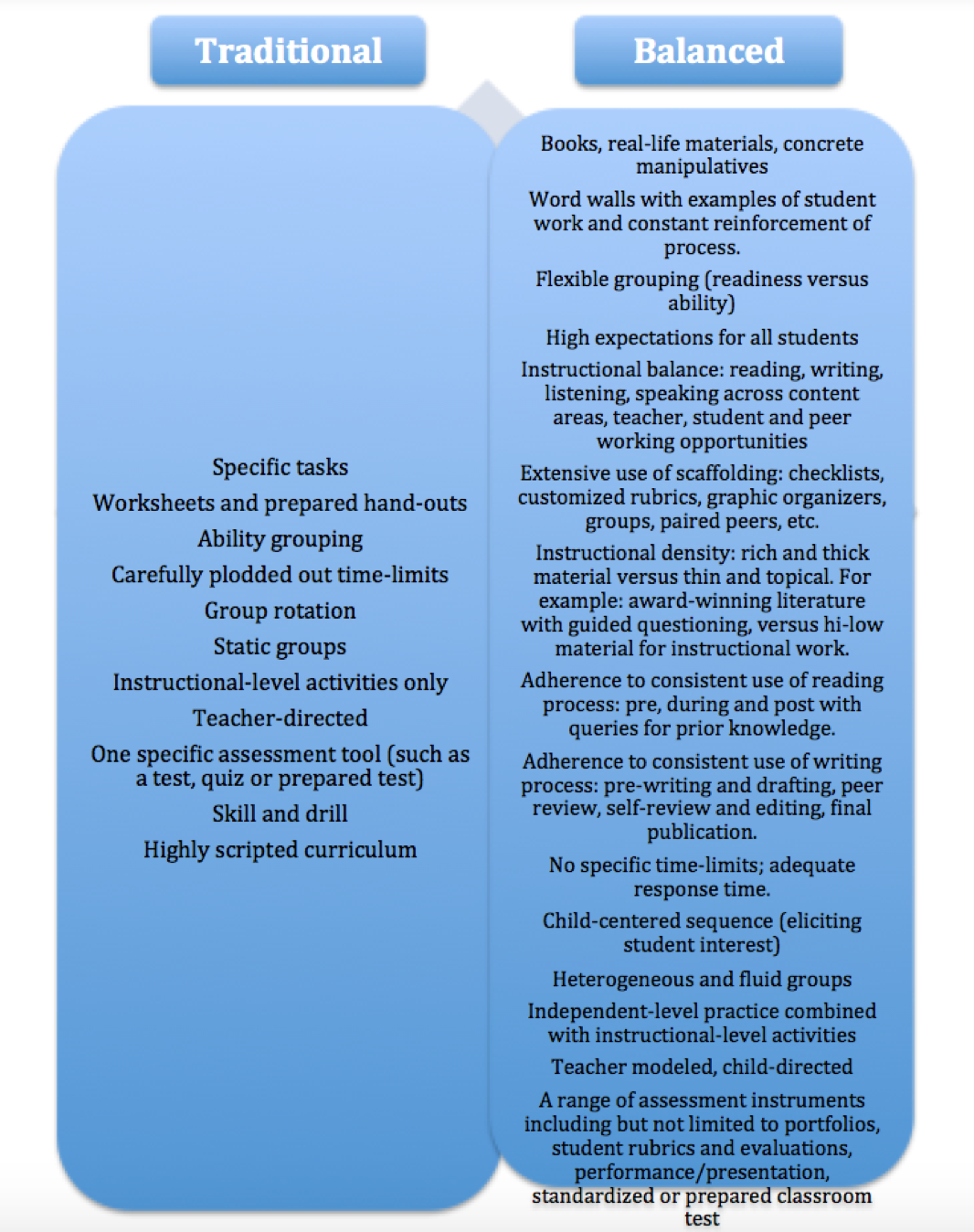Struggling Learners
x
2. Balancing Literacy for ELLs
Correlated materials (aids, strategy guides, organizers) can be downloaded from the Course Objectives | Research | Materials folder
Traditional Versus Balanced
Good instruction facilitates the management of several mental processes that work to achieve comprehension and cognition (Stahl, 2008), and it is this activity that teachers must facilitate to move students up in content, concept, and skill. Skilled readers employ a similar process whenever they read, but less skilled readers need direction. This is where we come in, and strategy makes the difference. Using picture walks, KWLs and DRTA methods as scaffolds, students were proven to improve through attending to language and text, responding, and becoming more engaged readers and writers. Each of these methods works to draw from students' background knowledge, the fundamental underpinnings for moving comprehension to the next level.
The study determined that students engaging in picture walks and the DRTA methods showed the greatest gains in reading. DRTA was particularly powerful in the acquisition of science content, verifying it as a powerful content strategy. While KWLs did not show significant improvement in comprehension or content, it did aid in the scaffolding to the skills contained within the DRTA and picture walk methods - KWLs continue to be powerful pre-reading strategies that work well into during and post-reading success.
Let's take a look at these important strategies, and analyze them for content area application:
Picture Walks:
Picture walks are used to facilitate pre-reading conversation among students. They're based on Marie Clay's (1991, 1993) methods for effectuating reading introductions. Leveled text are used to take students through the text features relevant to comprehension, but often overlooked by novice readers. Students are led through a pre-reading process: previewing pictures, looking at maps or charts, making predictions, looking at character names. Each page is previewed, or a few pages, as determined through student responses and need for more information. While the goal of a picture walk is to promote reading fluency, teachers must think through potential challenges students might encounter with concept, understanding, or baseline understanding of the book itself, in order to determine the course of picture walk, and is therefore completely unscripted.
DRTA - Directed Reading-Thinking Activity:
The Directed Reading-Thinking Activity (DRTA) method aids students in the "during reading" process, and can often serve as a scaffold to move students from lower-level comprehension to higher, more critical levels of comprehension. It works students through a problem-solving process, and begins with teachers selecting a grade-level non-fiction text. Text is chunked and discussed section-by-section as the teacher facilitates. Students make predictions, revise them and then justify them when reading independently. This is an important process where they establish purposes for their own reading while increasing proficiency in independent reading, and facility with non-fiction print.
KWLs - Know, Want to Know, Learn:
KWLs cause students to reach into their own prior knowledge to aid them in the upcoming reading by setting purposes for reading non-fiction text. It was originally developed by Ogle in 1986, and continues to be a popular teaching aid to help scaffold students into deeper levels of comprehension through discussion generation and/or written response on an upcoming topic. After a brief review or "peak" at the reading subject, students use a KWL chart to first complete the "K" portion prior to reading with what they already know about the topic or reading piece. After a brief discussion, they move to "W" to determine what they want to learn more of in the topic or upcoming reading. This is where the purposes get set, and accountability begins. After reading, students are taken through the "L" portion to determine what they learned. They can also return to "W" to include more of what they'd like to learn as they continue to study and/or read about the same subject.
